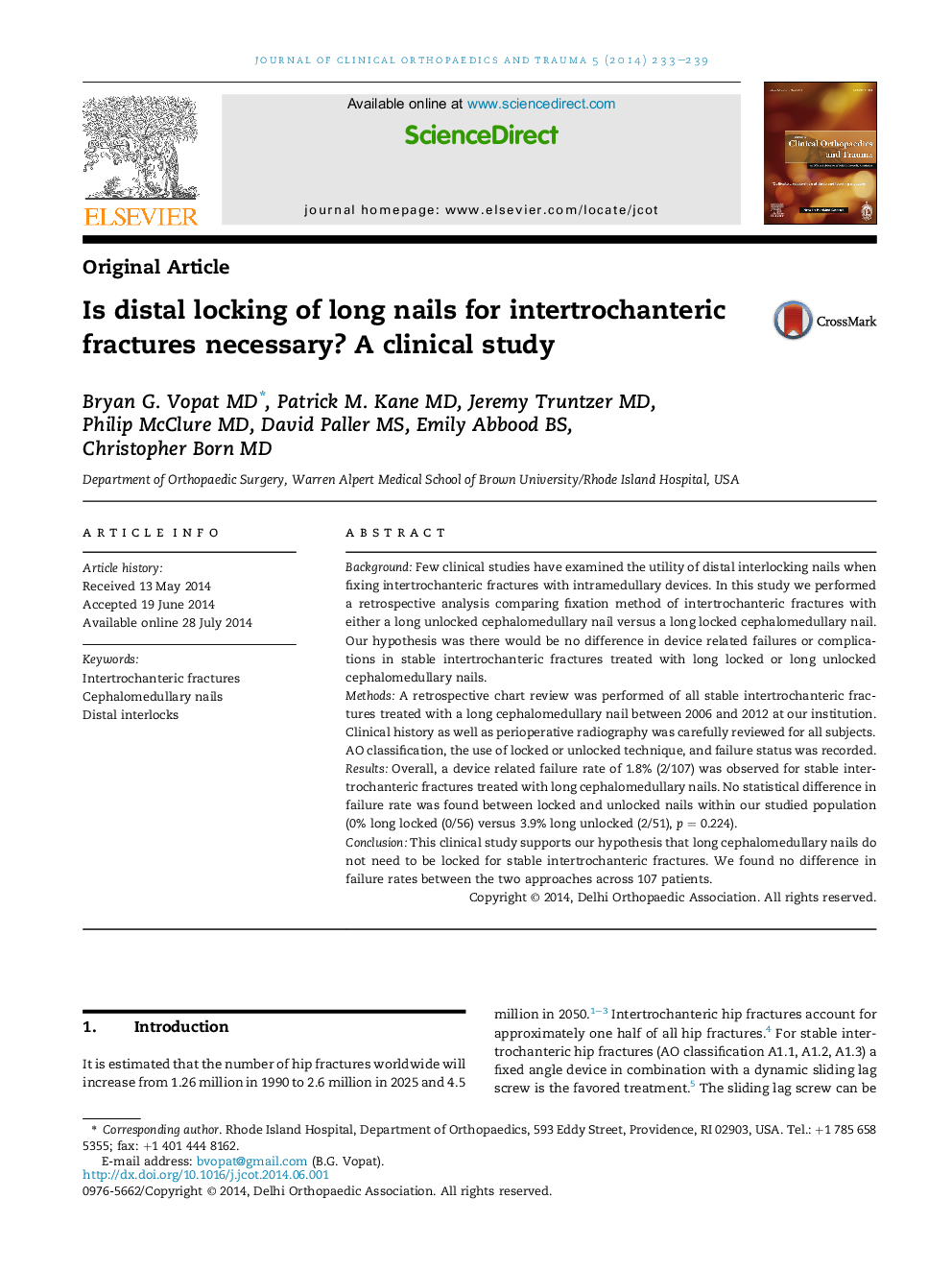| Article ID | Journal | Published Year | Pages | File Type |
|---|---|---|---|---|
| 3245432 | Journal of Clinical Orthopaedics and Trauma | 2014 | 7 Pages |
BackgroundFew clinical studies have examined the utility of distal interlocking nails when fixing intertrochanteric fractures with intramedullary devices. In this study we performed a retrospective analysis comparing fixation method of intertrochanteric fractures with either a long unlocked cephalomedullary nail versus a long locked cephalomedullary nail. Our hypothesis was there would be no difference in device related failures or complications in stable intertrochanteric fractures treated with long locked or long unlocked cephalomedullary nails.MethodsA retrospective chart review was performed of all stable intertrochanteric fractures treated with a long cephalomedullary nail between 2006 and 2012 at our institution. Clinical history as well as perioperative radiography was carefully reviewed for all subjects. AO classification, the use of locked or unlocked technique, and failure status was recorded.ResultsOverall, a device related failure rate of 1.8% (2/107) was observed for stable intertrochanteric fractures treated with long cephalomedullary nails. No statistical difference in failure rate was found between locked and unlocked nails within our studied population (0% long locked (0/56) versus 3.9% long unlocked (2/51), p = 0.224).ConclusionThis clinical study supports our hypothesis that long cephalomedullary nails do not need to be locked for stable intertrochanteric fractures. We found no difference in failure rates between the two approaches across 107 patients.
